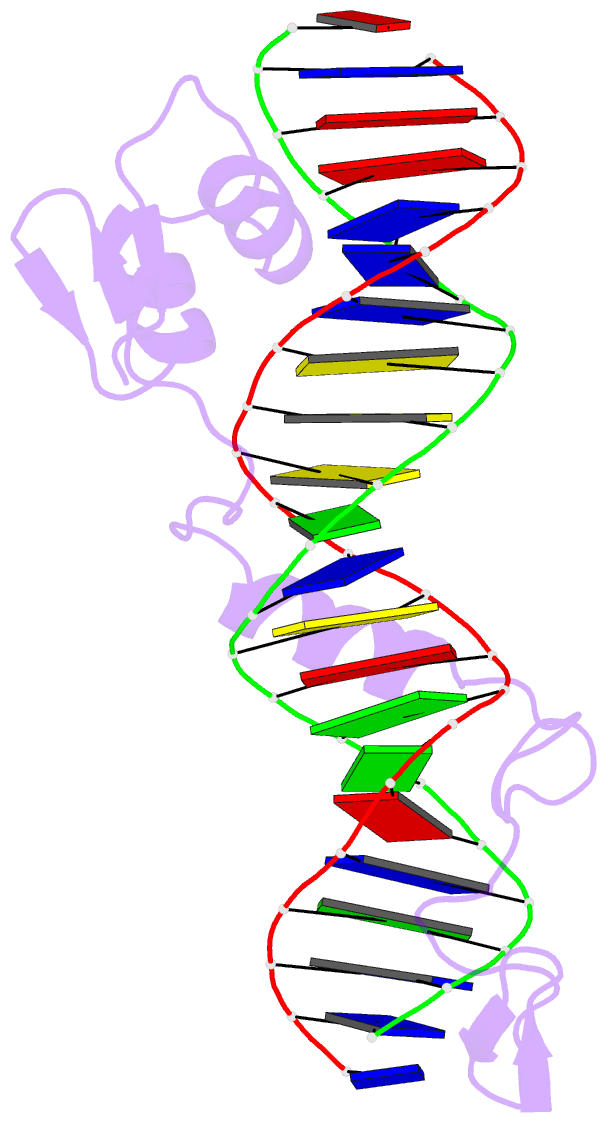Summary information and primary citation
- PDB-id
- 1t2t; SNAP-derived features in text and JSON formats;
DNAproDB
- Class
- hydrolase-DNA
- Method
- X-ray (2.5 Å)
- Summary
- Crystal structure of the DNA-binding domain of intron endonuclease i-tevi with operator site
- Reference
- Edgell DR, Derbyshire V, Van Roey P, LaBonne S, Stanger MJ, Li Z, Boyd TM, Shub DA, Belfort M (2004): "Intron-encoded homing endonuclease I-TevI also functions as a transcriptional autorepressor." Nat.Struct.Mol.Biol., 11, 936-944. doi: 10.1038/nsmb823.
- Abstract
- Customary binding sites of intron-encoded homing endonucleases lie within cognate intronless alleles, at the so-called homing sites. Here, we describe a novel, high-affinity binding site for I-TevI endonuclease, encoded within the group I td intron of phage T4. This site is an operator that overlaps the T4 late promoter, which drives I-TevI expression from within the td intron. I-TevI binds the operator and homing sites with equal affinity, and functions as a transcriptional autorepressor. Distinct sequence and spacing requirements of the catalytic domain result in reduced cleavage activity on operator DNA. Crystallographic studies showed that the overall interactions of the DNA-binding domain with the operator and homing sites are similar, but have some different hydrogen-bonding contacts. We present a model in which the flexibility in protein-DNA interactions allows I-TevI to bind variant intronless alleles to promote intron mobility while facilitating its function in autorepression, and thereby persistence in its host.





